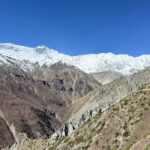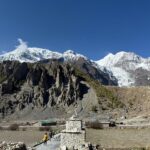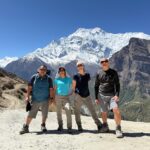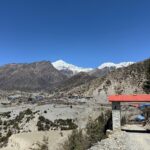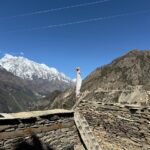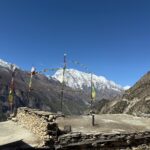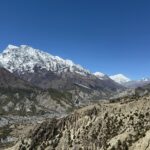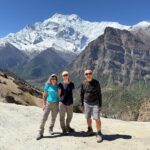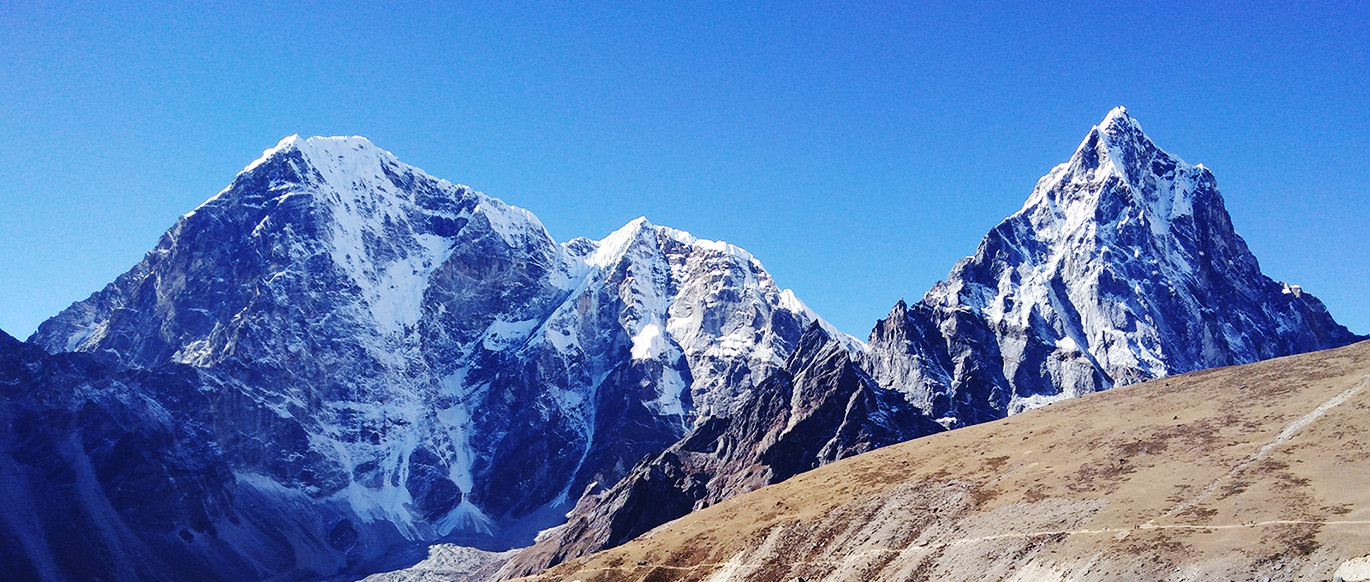
Is the Everest Base Camp Trek Worth the Journey?
Is the Everest Base Camp Trek Worth the Journey? Stunning views, cultural immersion, and personal achievement make it unforgettable.
This is a question that many adventurous individuals ponder as they consider this iconic trek. Let’s explore the compelling reasons why this journey is more than just a trek; it’s a transformative experience.
Five Reasons The Everest Base Camp Trek Is Worth It
Are you wondering whether the time, money, and effort invested in the climb to Everest Base Camp is worth it? These five strong arguments make this journey a once-in- a-lifetime experience you will not regret.
1. The Unbeatable landscape
Regarding amazing sights, the trip to the Everest Base Camp stands out. Set against the grand Himalayan backdrop, picture yourself strolling among verdant forests, crossing high suspension bridges over fast-moving rivers, and meandering through little Sherpa towns.
Still, that’s only the beginning. The scenery changes drastically as you ascend higher to expose panoramic views of some of the highest mountains in the world, including Ama Dablam, Pulmorii, Lhotse, and naturally Mt. Everest!
The highlight is From Kala Patthar, an 18,509-foot vantage point, the sunrise Here the snow-capped mountains are drenched in an amazing range of oranges and pinks under first light of day. This scene is so amazing it seems like entering a painting.
And we cannot ignore the Khumbu Glacier, among the highest glaciers on Earth, which you will pass on your route to base camp. Unlike anything you would find elsewhere, its complex ice patterns are a wonder. In a time when we frequently find ourselves fixated on screens, the natural beauty you will discover on this journey reminds us greatly of what we are losing.
2. The Cultural Adventure
Starting the EBC journey is a cultural excursion that transports you into the heart of Sherpa land, not only a physical one. Originally from Tibet, the Sherpa people have a rich cultural background firmly linked to the Himalayas. You will be able to interact with local Sherpas, well-known for their friendliness and hospitality, as you travel through towns such Namche Bazaar and Tengboche. One of the highlights is touring the important Buddhist monastery in the Khumbu area, the Tengboche Monastery. Many hikers have great spiritual experience from monks in deep concentration or chanting prayers here.
If you get an invitation to participate in a local celebration or ritual, you should not be startled; these unplanned events offer a rare look into Sherpa culture that few visitors encounter. It also speaks to active involvement. Whether you’re learning about the meaning of prayer flags and wheels or enjoying a cup of butter tea with a nearby family, these cross-cultural interactions help you to better comprehend the globe. They improve your trip, going beyond the physical difficulty and turning the path to Everest Base Camp into an experience that might change your life.
3. The Challenge Both Physical and Psychological
The climb to the Everest Base Camp is hardly a leisurely stroll, let me say. Given heights above 17,000 feet, the physical strain is really great. You will be walking for days, usually in difficult weather, and the thin air will make every step seem like effort. The truth is, though, that conquering these challenges makes this journey so very rewarding. The physical effort tests your limitations and highlights abilities you never realized you possessed. Furthermore, it is a cerebral challenge as much as a test of physical ability.
Sometimes you will question your capacity to keep on, but conquering those mental obstacles results in a great sense of accomplishment that is challenging to articulate. It imparts lessons about tenacity, will, and the amazing power of the human body and mind.
Not let us also ignore the feeling of community. Since everyone travels through the same obstacles and elements, the trip connects everyone. The friendships developed on the path usually last a lifetime, which gives the experience a another level of complexity.
4. The feeling of success
The reality of your trip floods you as you approach Everest Base Camp in last stages. This moment of success brings all the planning, physical work, and mental hurdles you have encountered together.
Surrounded by the magnificent Himalayas, you stand at the base of the tallest peak in the world and feel an incredible, both humbling and exhilarating sense of accomplishment.
It’s about the personal trip you’ve taken to get here, not only about the bragging rights—though they’re rather fun.
Although many consider your trip to be among the toughest in the world to complete, you have also overcome personal constraints. Your achievement has overwhelmed your questions, worries, and restrictions.
This sense of success is a life-changing event that stays with you, not simply a fleeting emotion. It reminds you of your ability constantly, improves your self-esteem, and changes your perspective of life.
The natural reward of reaching Everest Base Camp is a valuable gift you retain long after you return to the daily grind in a society too frequently equating success with financial benefits.
5. The Financial Outlay
Let us start with the obvious: getting to Everest Base Camp is not inexpensive. Guided trips range in cost from a few thousand dollars to considerably more, hence they call for a significant financial commitment. Still, this is an investment in an absolutely priceless experience, not only a cost.
Think of this: you are starting a transforming trip that will test you emotionally, physically, and psychologically in addition to paying for a climb.
Along with the wonderful peace of mind that results from expert support, the expenses include basic logistics including guides, porters, and permits. This lets you really enjoy the experience free from the pressure of fine detail management.
Your financial input also transcends the journey itself. It is rather important for supporting the local economy as well as for helping Sherpa communities and other residents who enable this amazing experience.
Your purchase has a beneficial knock-on effect that affects life outside your own trip.
Is then the financial commitment justified? In essence, yes. Few other trips can help you to nourish your spirit and broaden your viewpoint like this one can.
Maximizing the Value of Your Everest Base Camp Trek
You have thus chosen to go on the Everest Base Camp trip, which is fantastic. Let’s now talk on ways to improve your experience on this amazing trip to ensure it is really unforgettable.
Selecting the Correct Travel Time
One of the most crucial choices you will have to make while organizing your EBC trip is choosing the optimal time to hike to Everest Base Camp. Although the path is somewhat easy, every season presents a different experience; hence, the choice of the time will greatly affect your trip. Pre-monsoon (March to May) and post-monsoon (September to November) are the most often occurring seasons. The temperature is usually steady during these months, and the great visibility offers breathtaking vistas of the Himalayan mountains. While post-monsoon shows a scene restored by the rain, pre-monsoon highlights the beauty of flowering rhododendrons.
Packing Wise
For a journey of size, strategic packing is very vital. You should give much thought to your packing list for Everest Base Camp so that you are prepared for the several environments you will encounter. The aim is to pack light but clever, concentrating on basics that offer best use without adding pointless weight. Start with the simple: waterproof outer layers, insulating mid-layers, and moisture-wicking base layers. Never compromise quality; decent trekking equipment will improve your comfort and safety. Another essential item is footwear; choose robust, waterproof hiking boots with great ankle support.
Acclimatization is Important
One of the key elements of a good Everest Base Camp trip is appropriate acclimatization. Ignoring this stage could lead to altitude sickness, which can range from minor discomfort to extreme, perhaps fatal symptoms.
The walk reaches heights above 17,000 feet, when the air is thin and oxygen levels are low. Not only advised but also absolutely vital is learning to live with these issues.
Usually at important elevations like Namche Bazaar and Dingboche, most guided treks include acclimatization days on the schedule. These days let your body adapt by walking to a higher altitude then sleeping at a lower level.
Pro tip: Also smart is avoiding alcohol and caffeine and staying hydrated as they aggravate symptoms of altitude sickness.
Preparation for Success
Though the Everest Base Camp walk is open to people with different degrees of fitness, properly enjoying the trip depends on enough preparation.
Three to six months before your trek, your training schedule for the Everest Base Camp should ideally start. Since you will be hiking for several hours every day, usually over hilly and uneven ground, the goal is to develop both strength and endurance.
Excellent for building endurance are cardiovascular activities include swimming, cycling, and running. Try to three to four times a week engage in at least thirty minutes of cardio. Incorporate hill runs or stair climbing as your trip gets ready to more realistically represent the conditions you will come across.
Oversaw Your Budget
To be quite honest, getting to Everest Base Camp requires a substantial financial outlay. Still, you may enhance the value of your trip with some careful preparation and financial control.
The secret is to find places where you might cut back and where to spend a bit more.
Above all, never undervalue necessary tools and directed services. For your general experience and safety, these are really essential; saving expenses here could compromise your trip.
Furthermore smart is to have enough cash in the local currency since credit card fees might mount up and ATMs are restricted. This will enable you to prevent any unanticipated charges and monitor your everyday spending.
Is then a visit to Everest Base Camp worthwhile? We can say with assurance yes.

